.
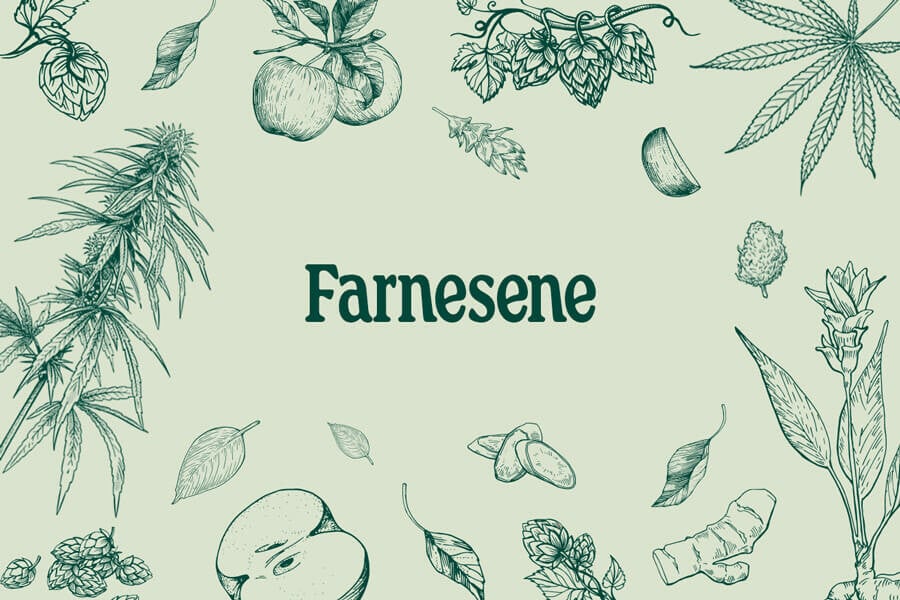
Farnesene: A Little-Known Cannabis Terpene
Have you heard of farnesene? While most cannabis lovers have yet to be acquainted with this terpene, you can expect to hear a lot more about it soon. Some new F1 hybrid cannabis genetics contain much higher concentrations of this fruity and earthy compound, and emerging studies are showing some impressive clinical potential.
Contents:
You’ve heard of limonene, myrcene, and pinene, but what about farnesene? This little-known terpene often falls to the wayside in discussions on cannabis constituents, but it contributes distinct aromas and flavors to numerous cannabis cultivars.
Cannabis contains over 400 chemicals[1] of interest, so you can see why some of these compounds receive less attention than others. The superstar terpenes that all cannabis users know and love have ascended to fame because they show up in high concentrations. Others, such as farnesene, are mostly present in small quantities. However, some varieties contain enough of this terpene for it to make a noticeable impact on flavor and aroma.
So, what exactly does farnesene smell and taste like? And does it contribute to the entourage effect? How does it work in the body? Find out the answers to these questions, and more, below.
What Are Terpenes?
Terpenes are the largest group of naturally occurring molecules; researchers have identified over 30,000 in nature so far. As volatile aromatic compounds, they are responsible for the unique scents of certain plants. They underpin the recognisable notes of oranges, pine trees, hops, rosemary, and, of course, cannabis.
Terpenes fall into the category of secondary metabolites. They aren’t involved in plant growth or reproduction, but they play important defensive roles. These chemicals help to deter pest insects and herbivores, and shield plants against UV rays. Some terpenes also act as plant-to-plant signalling molecules[2], helping to stimulate the immune system of nearby kin.
Cannabis contains over 150 terpenes[3]. These chemicals are divided into two main groups: terpenes and terpenoids. Terpenes are strictly hydrocarbons (they’re formed of only hydrogen and carbon), whereas terpenoids feature additional functional groups. All terpenoids are terpenes, but not all terpenes are terpenoids.
Terpenes are made up of subunits called isoprene units. The number of isoprene units that compose a terpene determines which chemical category it falls into. Single isoprene units, known as hemiterpenes, contain five carbon atoms; monoterpenes are made up of two isoprene units and contain 10 carbon atoms; diterpenes are made up of four isoprene units, and therefore contain twenty carbon atoms, and so on.
Say Hello to Farnesene
Like other terpenes found in cannabis, farnesene exists in multiple different forms. Overall, the term refers to six distinct chemical entities, including α-farnesene and β-farnesene. As isomers, these molecules contain the same number of atoms of each element; however, they are arranged differently. In this case, α-farnesene and β-farnesene differ only in the location of one double carbon bond. Both of these molecules are sesquiterpenes, meaning they contain three isoprene units and 15 carbon atoms.
Research suggests that farnesene plays a protective role against certain insects, particularly aphids. These small critters produce and use the terpene themselves as an alert signal[4] to warn each other of nearby predators. The aroma of farnesene not only sends aphids fleeing, but it attracts predatory insects that are drawn to this smell.
<
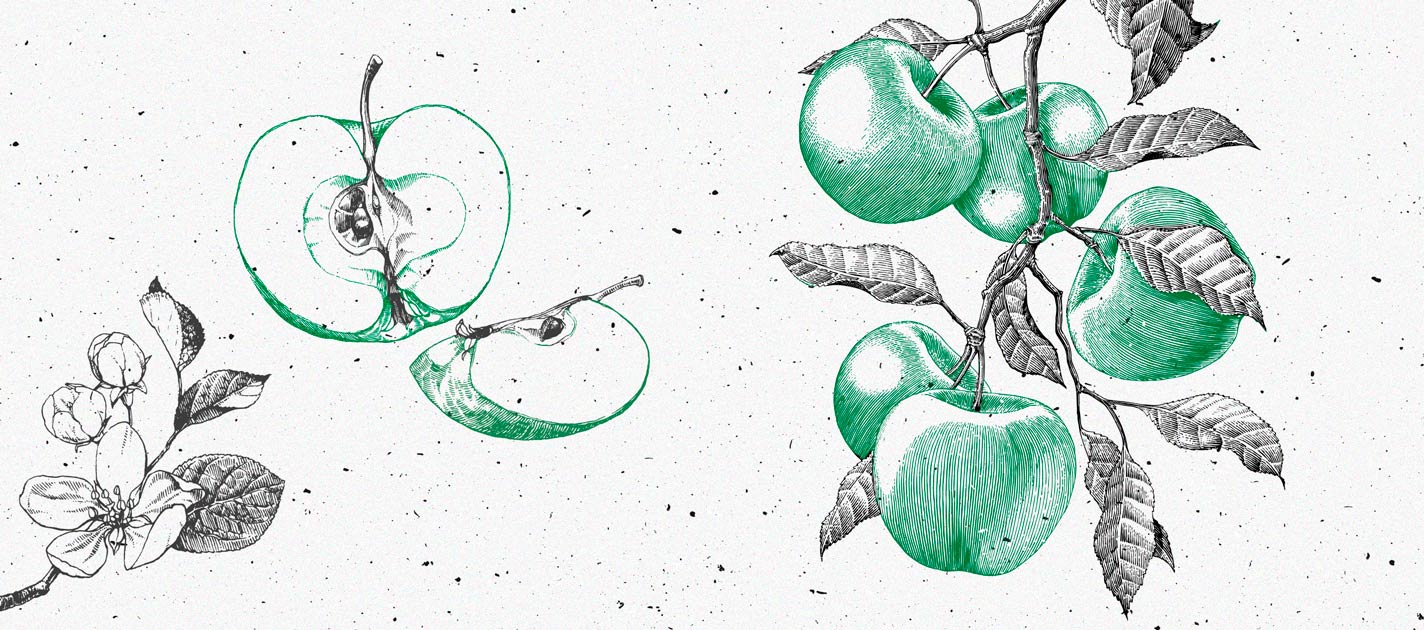
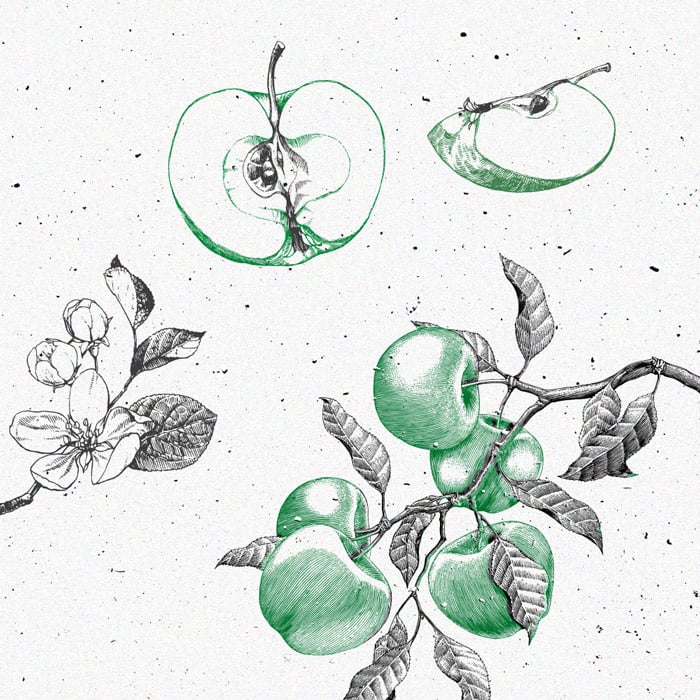
What Does Farnesene Smell Like?
Think apples! But not just any old apples; ripe, crunchy green ones. Farnesene occurs in high concentrations specifically within the skin of green apples, and underpins the fresh, fruity smell that permeates the air after biting a chunk out of one. Cannabis strains high in farnesene emit subtle but noticeable aromas of apple and other fruit.
Farnesene also contributes to the complex smells of other plants, including:
- Turmeric

- Hops
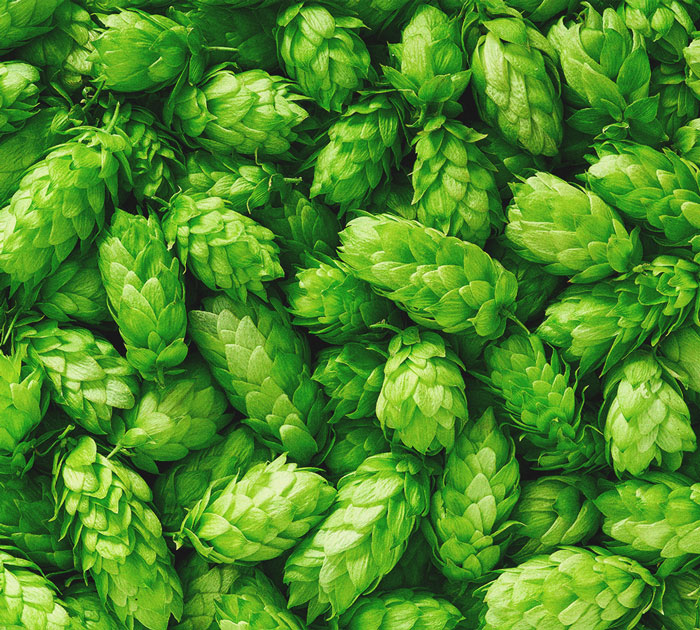
- Ginger

- Cedarwood

- Sandalwood

- Grapefruit
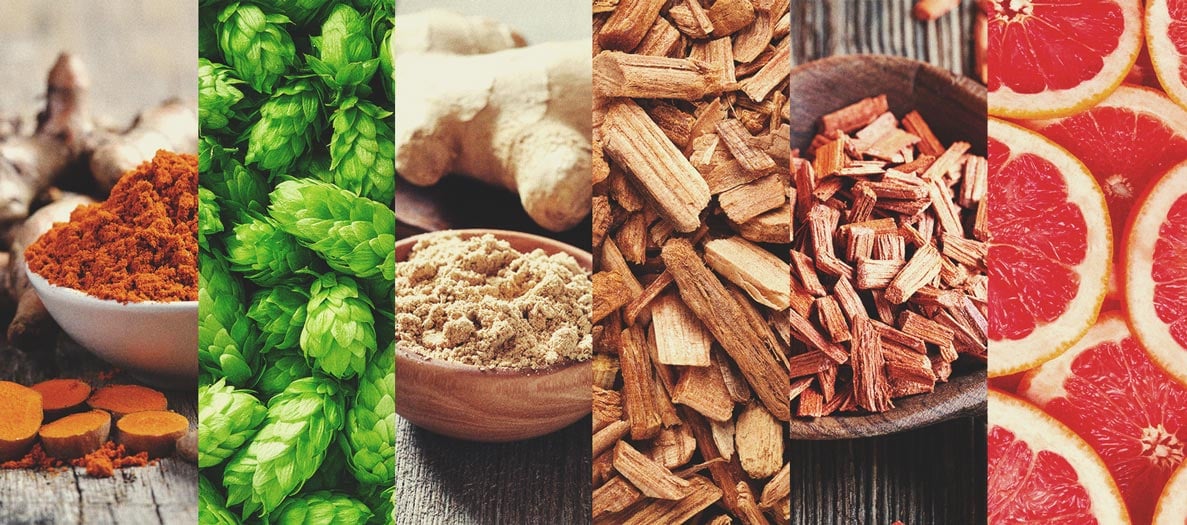
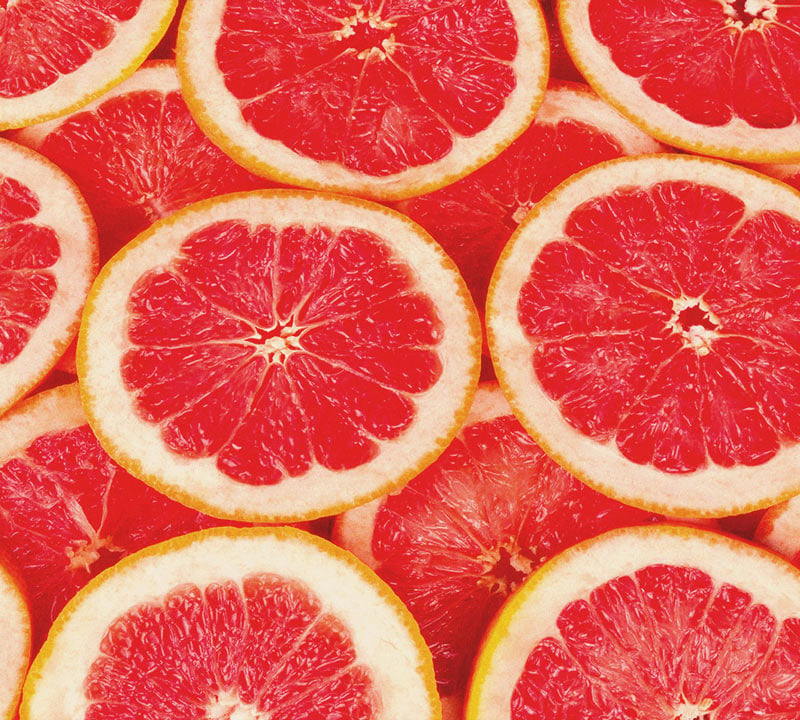
What Does Farnesene Taste Like?
As you can imagine, farnesene contributes apple-like tones to cannabis flowers that produce relatively high levels of this terpene. However, confining the taste to this fruit doesn't accurately describe the full experience. The compound offers a complex flavor profile that also highlights notes of citrus, wood, and earth.
What Temperature Should You Vape Farnesene At?
Modern vaporizers offer flexible temperature controls, with many allowing adjustments within increments of 1°C. This gives users the freedom to target the boiling points of specific phytochemicals, including cannabinoids and terpenes. The ability to customise each hit provides a more tailored experience than hitting joints or bongs (although many cannabis lovers still prefer these older methods).
When it comes to targeting farnesene, you’ll need to set your device to at least 124°C. At this temperature, you’ll also vaporize THCA, beta-caryophyllene, and CBDA.
What Cannabis Strains Contain the Most Farnesene?
If you’re looking for strains high in farnesene, light up some of the following cultivars:
- Titan F1: This new F1 hybrid contains high levels of farnesene, alongside ocimene and myrcene. Enjoy flavors of lemongrass, fruit, and candy.
- Milky Way F1: Experience the fruity tastes of farnesene in combination with a warm and fuzzy body high.
- White Rhino: This progeny of White Widow and North American Indica packs enough farnesene to dish up tastes of fresh green apple.
- Cherry Punch: This sativa-dominant variety descends from Cherry AK-47 and Purple Punch F2. Her dense purple buds provide plenty of farnesene.
Farnesene and the Entourage Effect
Most cannabis lovers have heard of the entourage effect. This theory suggests that many of the components in cannabis—not just the cannabinoids—work in concert to produce the unique effects of each cultivar. So far, no studies have assessed the synergistic effects of farnesene and other cannabinoids, terpenes, and cannabis phytochemicals.
Several terpenes and cannabinoids show some evidence[5] of an entourage effect. As more research comes forward, it could turn out that farnesene works to amplify the effects of other cannabis compounds.
What Does the Research Say About Farnesene?
So, how exactly does farnesene work in the body? Does the molecule offer any benefits to recreational or holistic cannabis users? Right now, the research remains early and inconclusive. However, cell and animal studies offer an indication of what future research could reveal. These findings include:
- Neuroprotection: A 2021 paper[6] published in the International Journal of Neuroscience documents a study that tested farnesene in a cell model of Alzheimer’s disease. The researchers looked for evidence of neuroprotection against β-amyloid toxicity—a protein associated with Alzheimer's pathophysiology.
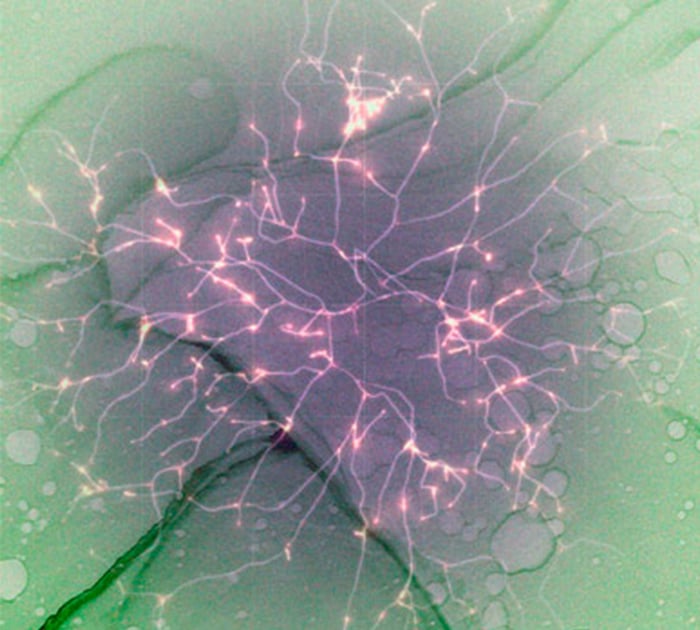
- Antifungal: A collaborative team of researchers from the USA and India tested farnesene[7] and other terpenes against Candida albicans. This pathogenic yeast forms part of the microbiome, but can occasionally grow out of control and cause symptoms such as digestive issues and fatigue. The research team looked to see if the terpene managed to suppress biofilm growth and morphogenesis.

- Anti-inflammatory: Chronic inflammation contributes to a host of health conditions. A study[8] published in the Journal of Essential Oil Bearing Plants set out to assess the anti-inflammatory properties of Valeriana jatamansi essential oil, of which farnesene makes up a large fraction.


When You Taste Apples and Earth, Think Farnesene
You can now add farnesene to the list of terpenes you’re acquainted with. Although this terpene doesn’t currently get much attention, you can expect to hear more about it in the future. New F1 hybrid strains destined for popularity contain high quantities of this chemical, and emerging research surrounding its possible clinical applications will attract cannabis users seeking a more holistic experience.
- Cannabis, a complex plant: different compounds and different effects on individuals - PMC https://www.ncbi.nlm.nih.gov
- https://onlinelibrary.wiley.com/doi/full/10.1111/tpj.15453
- https://www.sciencedirect.com/science/article/pii/S0168945219301190
- Insect alarm pheromones in response to predators: Ecological trade-offs and molecular mechanisms - PubMed https://pubmed.ncbi.nlm.nih.gov
- https://www.researchgate.net/publication/51485891_Taming_THC_Potential_cannabis_synergy_and_phytocannabinoid-terpenoid_entourage_effects
- https://www.tandfonline.com/doi/abs/10.1080/00207454.2020.1754211","ttps://www.scirp.org/journal/paperinformation.aspx?paperid=69427
- https://www.tandfonline.com/doi/abs/10.1080/0972060X.2011.10643596








































